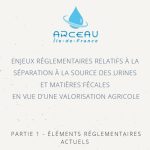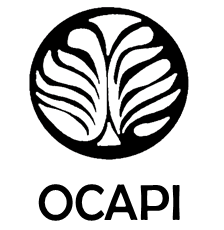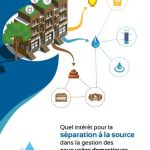Publications essentielles sur la séparation à la source
Quel intérêt pour la séparation à la source dans la gestion des eaux usées domestiques en France ? ARCEAU Ile-de-France, 2021. 36 p.
 Enjeux réglementaires relatifs à la séparation à la source des urines et matières fécales en vue d’une valorisation agricole. Partie 1 : Éléments réglementaires actuels.ARCEAU Ile-de-France, 2023, 24 p.
Enjeux réglementaires relatifs à la séparation à la source des urines et matières fécales en vue d’une valorisation agricole. Partie 1 : Éléments réglementaires actuels.ARCEAU Ile-de-France, 2023, 24 p.
Approche régionale
Vers la résilience alimentaire. Les greniers d’abondance, 2020. Guide à destination des collectivités locales >> A consulter en particulier, la voie de résilience n°11 : « recycler massivement les nutriments », p.76 et suiv.
La séparation à la source des effluents urbains. Intérêts et mise en pratique en Europe. Besson, M. 2017. Programme MUSES. INSA Toulouse.
Etude des réalisations internationales et simulation d’un scénario de séparation à la source. Besson, M. 2015. mémoire de Master 2, INSA Toulouse.
Quel intérêt et quelle opportunité de mettre en place une collecte sélective des urines en milieu urbain dense ? Étude sur le territoire du SIAAP. Caby, A. 2013. mémoire de Master 2, École des Ponts ParisTech & AgroParisTech
Approche globale
Compendium des systèmes et technologies d’assainissement. Tilley, E., Ulrich, L., Lüthi, C., Reymond, P., & Zurbrügg, C. 2016 (2ème édition). Swiss Federal Institute of Aquatic Science and Technology (Eawag), Duebendorf, Switzerland.
Urine diversion guide (Le guide de la séparation à la source de l’urine). Rich Earth Institute. 2019.
Urine blindness and the use of nutrients from human excreta in urban agriculture. Drangert, J.-O., 1998.GeoJournal 45: 201-208
Urine diversion : one step towards sustainable sanitation. Kvarnström, E., Emilsson, K., Richert Stintzing, A., Johansson, M., Jönsson, H., af Petersens, E., Schönning, C., Christensen, J., Hellström, D., Qvarnström, L., Ridderstolpe, P., Drangert, J.-O., 2006. . Stockholm: Stockholm Environment Institute. EcoSanRes Publications Series. Report 2006-1
Separate management of anthropogenic nutrient solution (human urine). Larsen, T.A. & Gujer, W., 1996. Wat. Sci. Tech. Vol. 34. No. 3-4, pp. 87-94
Source separation and decentralization for wastewater management. Larsen, T. A., Udert, K. M., & Lienert, J. (Eds.). 2013. Iwa Publishing.
Changements de pratiques
High acceptance of urine source separation in seven European countries: a review. Lienert, J., & Larsen, T. A. (2009). Environmental science & technology, 44(2), 556-566.
Techniques de traitements de l’urine
Treatment processes for source-separated urine. Maurer, M., Pronk, W., & Larsen, T. A. (2006). Water research, 40(17), 3151-3166.
Fate of major compounds in source-separated urine. Udert, K. M., Larsen, T. A., & Gujer, W. (2006). Water Science and Technology, 54(11-12), 413-420
Approche agronomique
Urine separation – closing the nutrient cycle. Johansson, M., 2000. Final Report of the R&D Project: Source-Separated Human Urine – A Future Source of Fertilizer for Agriculture in the Stockholm Region. Stockholm: Stockholm Vatten, Stockholmshem & HSB National Federation. Verna Ecology
Nitrogen Recovery with Source Separation of Human Urine–Preliminary Results of its Fertiliser Potential and Use in Agriculture. Viskari, E. L., Grobler, G., Karimäki, K., Gorbatova, A., Vilpas, R., & Lehtoranta, S. (2018). Frontiers in Sustainable Food Systems, 2, 32.
Approche sanitaire
Pharmaceutical residues in urine and potential risks related to usage as fertiliser in agriculture. Winker, M. (2009). Phd Thesis, TuTech Innovation. Stuttgart.
OMS, 2012. Guidelines for the safe use of waste water, excreta and grey water. Volume 4 Excreta and greywater use in agriculture. 204 p.
The behaviour of pharmaceuticals and heavy metals during struvite precipitation in urine. Ronteltap, M., Maurer, M., & Gujer, W. (2007). Water research, 41(9), 1859-1868.

